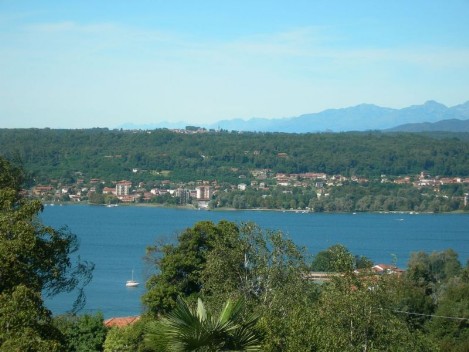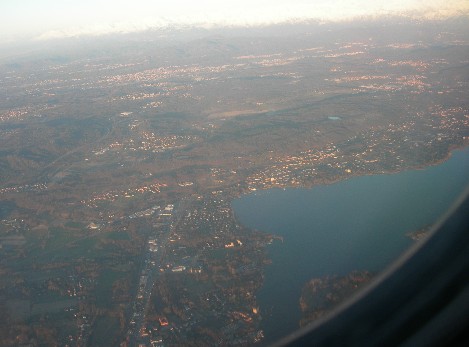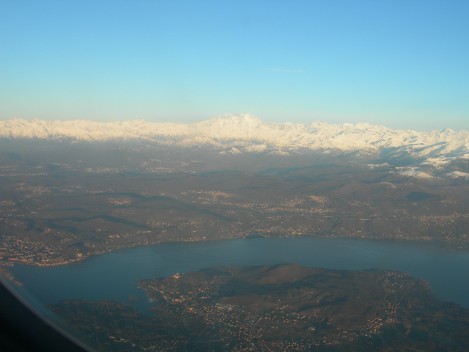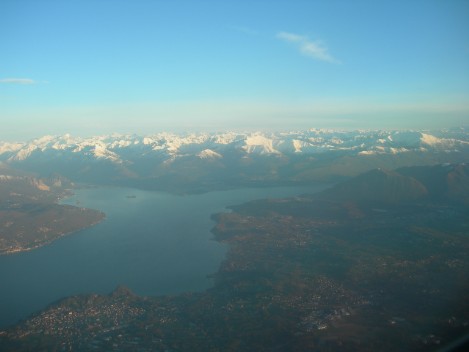Dormelletto Climate


Dormelletto climate
The climate of Dormelletto, located on the southern Piedmont lake Maggiore’s bank, has the characteristics of the typical climate conditions of Insubria region. This is an historical-geografic area located in northern Italy which corresponds to the ancient territory of the Insubri, a celtic population living in the region between the Po river and the lakes of Prealps from IV century B.C. and considered by Polibio the founder of the city of Milan around 390 B.C. The Insubric area is characterized by frequent rains and by the positive influence coming from the water mass of the lakes of Prealps, which limits the winter thermal cooling and lowers the hot summer weather. Other characteristic elements of the area are un-frequent fogs and the presence of typical local breezes (lake breezes).


Lake Maggiore climate
Lake Maggiore or Verbano, located in the Prealps area, has a surface area of about 213 km², a maximum length of 54 km and, at its widest, is 12 km. The lake basin has tectonic-glacial origins and its volume is 37 km³ with its deepest point at 373 m from the water surface. It is surrounded by morenic hills in the southern part and by high mountains in the North with some of these ones having snow year-round on the tops.
The weather of lake Maggiore is generally mild and it is known for its Mediterranean-like climate where tropical and sub-tropical plants can grow all year-round. For this reason the area surrounding the lake Maggiore has been called “Garden of Europe”. The lake's jagged banks are surrounded by the Prealps of Piedmont and Lombardy . The western bank is in Piedmont (provinces of Novara and Province of Verbano-Cusio-Ossola) and the eastern in Lombardy (province of Varese), whereas the most northerly section extends thirteen kilometers into Switzerland. During winter the lake helps to maintain a higher temperature in the surrounding region (since water releases heat energy more slowly than air). The temperatures are cooled down in summer by the breezes that blow on the water's surface changing its color. In winter the valleys carved by previous glaciers act like wind tunnels bringing down the cold winter air in the form of heavy winds that can make the waters of Lake Maggiore rise up like the waters of an open sea.
The area enjoys nearly 2300 hours of sunshine a year and an annual average temperature of 15.5 °C with about 25°C in summer and 10/15° in winter. The water of the lake has a comfortable temperature of 20 to 22°C in July and August. In winter snowfall is erratic and primarily affects the higher elevations. Rainfall is heaviest in May and lowest during the winter months while in the summer months the climate of Lake Maggiore is more hot and humid and often in these months the southern air clashing with the colder mountain air can frequently create thunderstorms.

Dormelletto winds
The winds effecting Dormelletto and the southern lake Maggiore area are:
a) Mergozzo: it blows from North and it is rather persistent with a strenght of about 6/7 Beaufort wind scale, in spite of this the waves are moderate
b) Maggiore: it blows from North East (in the northern lake it is called “Monteceneri”), it has a lower force but the waves are rough
c) Inverna: it blows in the afternoon from South and it is a wind which can be moderate and in this case it reports nice weather coming, while if its strenght and speed from moderate brezze becomes strong breeze also the waves increase and in this case Inverna reports bad weather coming and it is called “Invernon”
d) Mercuraghina: Dormelletto area is blowed by frequent breezes which can blow at various times during the day. Among these ones “Mercuraghina” is a moderate breeze,blowing in the morning and in the evening hours, coming from the hill area of the natural regional Park “Parco dei Lagoni”, located on the backside of the centers of Dormelletto and Mercurago (this one belonging to Arona town), all on the backside of Dormelletto bank.
The frequency of the breezes helps in the soothing action of the lake climate. It is important to underline the almost total absence of hot Sirocco winds, which can develop helf troubles to persons having particular phsycic and nervous sensibility.
Relative umidity
The R.U. yearly average value (day-night) is about 70%, which seems to be rather high but it keeps into consideration that during the night hours it reaches 90/95% for the evaporation of the water lake for almost all year round, so the average value results to be high. The minimum values are reported in July (about 65%) and the maximum ones in January (about 80%). Pratically during almost all the daylight hours (in good weather conditions) the R.U. is within normal values. The high level of R.U. in the night hours decreases a lot during the morning hours, reaching also values lower than 50% and it remains rather constant for a certain numbers of hours, also in relation with temperature. It restarts to increase in the afternoon hours, up to reach the highest values between 23 and 4 o’clock, depending on the months and seasonal period.
Pressure
The barometric pressure during all the year does not show particular differences, keeping an average around 760 mm and, as consequence, minimizing the effects on health and on persons sensible to fast barometric pressure changings.
Rainfalls
As for all the Prealps lakes area, rainfalls is heaviest in May and lowest during the winter months while in the summer months the climate of Lake Maggiore is more hot and humid and often in these months the southern air clashing with the colder mountain air can create thunderstorms on a regular basis.


